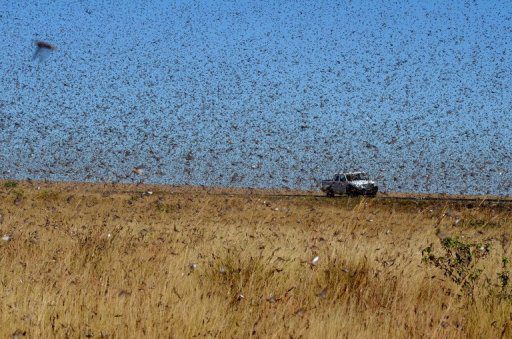
|
|
|
|
|
|
|
Farmers in Madagascar have once again had to witness their crops be destroyed by an annual plague of migratory locusts, which threatens the livelihoods of 13 million people.
Since April 2012, the creatures have descended on the land where nine million of the country’s agriculture workers try to make their living.
The threat lies in the insects’ voracious appetite, with one locust able to consume its body weight — about 2 grams — in a day. During plague season, billions of locusts swarm to the east African nation.
Photos of this year’s ambush show the insects appear as vast clouds in the sky, while farmers attempt try and fail to protect their land with fire and makeshift battons.
What began as an upsurge in 2010 became a plague because campaigns to tackle the insects between 2010 and 2012 were underfunded, according to the Food and Agriculture Organisation of the United Nation (FAO).
In September 2013, the Ministry of Agriculture and FAO sought to tackle the problem and launched a Three-year emergency Programme, which aims to control locust populations and thereby protect millions of vulnerable people.
To protect Madagascar’s naturally diverse ecosystem, control operations are carried out using bio pesticides.





